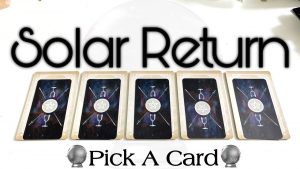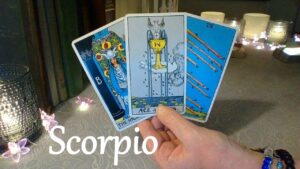The Single Tarot Card Draw
In the single tarot card draw, concentrate on a single question, such as what kind of day you can expect, or whether your important project will be successful. After shuffling as previously described, spread the cards out, face down, while continuing to think about your question, pause, and blindly select a single card. Lay that card face down in front of you, and repeat your question, either silently or aloud.
Turn the card over and let it “talk” to you. Record the date and time in a journal, state the question asked, and name the card drawn. Write down your impressions about the card, and what you believe the answer to your question is. Repeat the single card draw many times before going on to more complex layouts, and always record the event in your journal.
The Three Card Tarot Spread
Usually, the three-card tarot spread is used in relation to questions involving the past, the present, and the future of a situation. Formulate the question so that the answers involve an understanding of the problem or situation in terms of the past (what led up to the crisis—meaning the reason for asking the question), the present (the nature of the crisis—what is important right now about it), and the future (how the crisis will unfold, which may not be how the problem is solved).
Shuffle the entire deck as before, concentrate on the question, spread the deck out, face down, pause, and let your hands blindly select three cards. Lay the three tarot cards, still face down, in a row in front of you and repeat your question, either silently or aloud. Turn the cards over one by one and let each “talk” to you before turning the next one over.
Record the date and time in a journal, state the question asked, and name the cards drawn. Write your impressions about the three cards, and what you believe the answer to your question is.
The Celtic Cross (10 Card Tarot Spread)
The Celtic Cross spread consists of a ten-card tarot reading. The card position attributes are not set-in stone, as there can be some variations in terms of the meaning of each numbered card, but in general, here is a brief description of what each card position stands for/relates to:
Card #1-The Covering: Where the questioner is at this present moment in time. The important events, issues, attitudes, or influences around the question or current situation.
Card #2-The Crossing: What crosses one, for good or for bad. Current obstacles, problems, conflicts, and opposition that the questioner must deal with, but also what can be helpful or constructive. Can also be referred to as “the immediate challenge”.
Card #3-The Crown: The questioner’s hopes or fears, and their mental and emotional state regarding the query. Also seen by some as the best that can be achieved or attained from current circumstances. (Can also be referred to as the distant past).
Card #4-The Root: Past events or influences that have played an important part in bringing about the current situation, perhaps including those that brought one to the need for the question in the first place.
Card #5-The Past: Events or influences from the more recent past that have influenced the present but are now passing away. Can also be referred to as “best outcome”.
Card #6-The Future: Future events and fresh influences about to come into play that will operate in the near future.
Card #7-The Questioner: The questioner’s attitude and how they relate to the current situation. Can also be referred to as “factors affecting”.
Card #8-The House: How other people around the questioner affect and view matters in hand. Can also be referred to as “external influences”.
Card #9-The Inside: The questioner’s hopes, fears, and expectations with regard to the question or the current situation.
Card #10-The Outcome: The eventual outcome of events shown by the other tarot cards.




